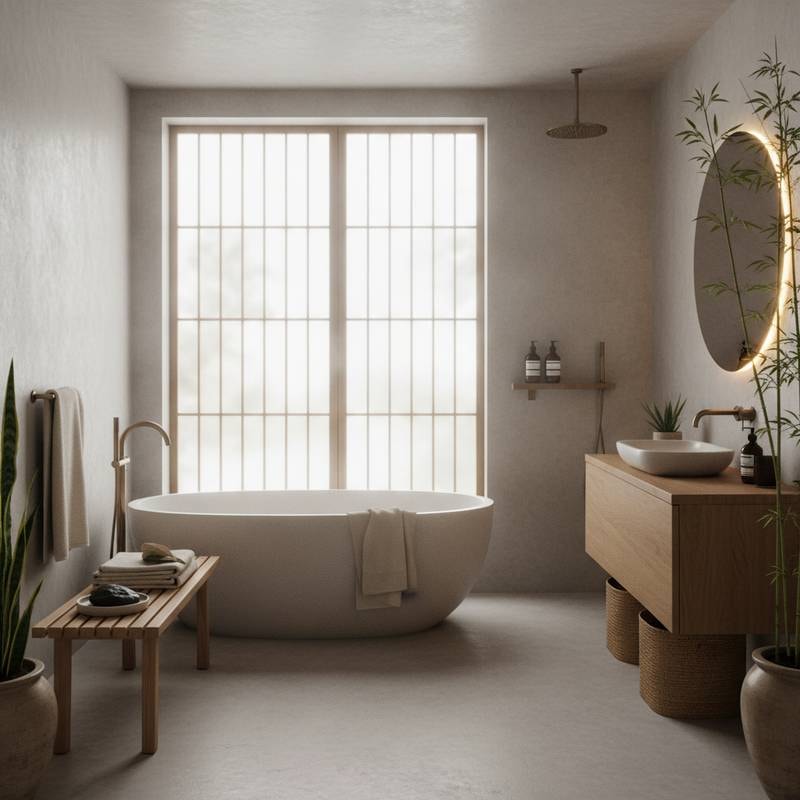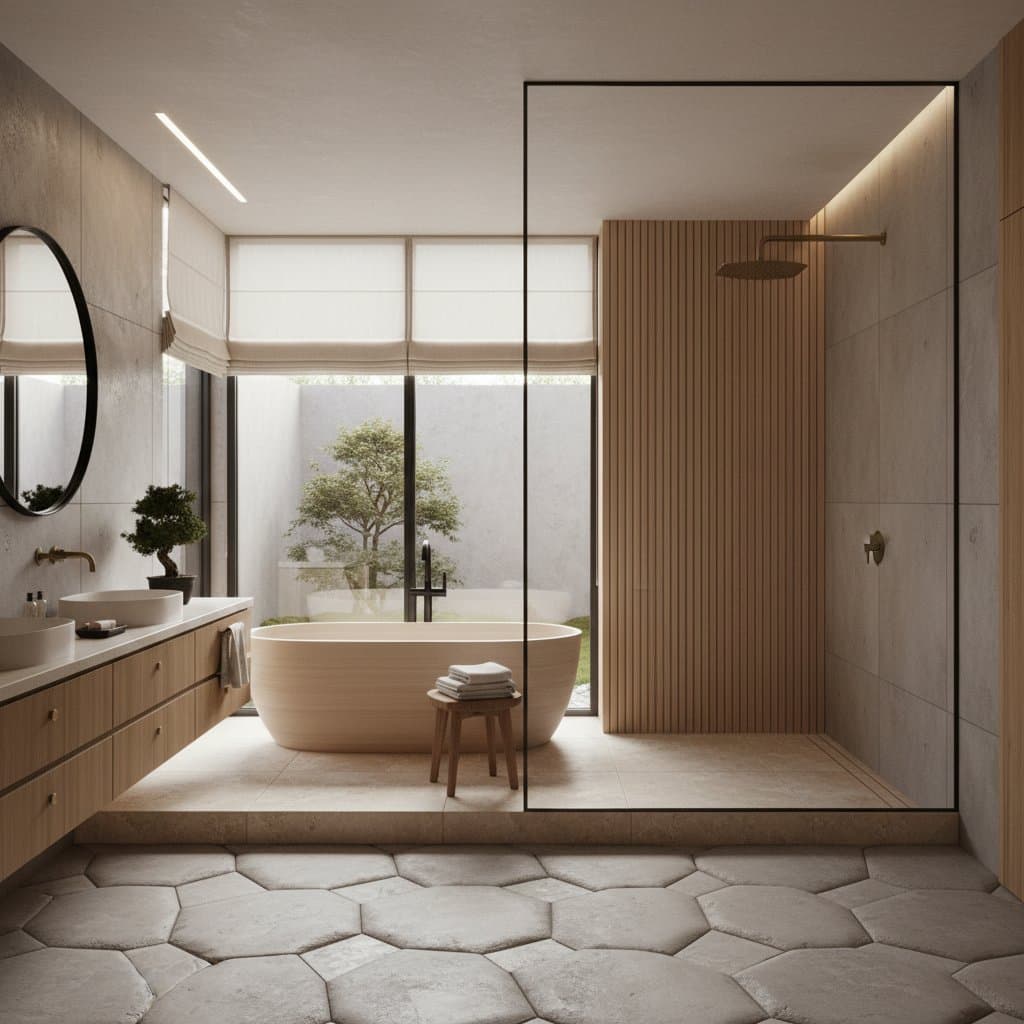Japandi Wet Rooms: The Essential Luxury Bathroom Trend for 2025
Homeowners often enter their bathrooms seeking a sense of peace rather than mere functionality. Envision smooth stone surfaces, warm wood accents, and open showers that invite relaxation. Japandi wet rooms realize this vision by integrating minimalist principles with spa-inspired comfort, emerging as a leading upgrade for those desiring grounded elegance.
Traditional bathrooms frequently suffer from clutter, enclosed fixtures, and challenging upkeep. Enclosed showers and bathtubs create visual barriers and accumulate dirt in seams. Japandi wet rooms resolve these issues through open, waterproof designs that prioritize simplicity and indulgence. This guide outlines implementation steps, cost considerations, and expected outcomes.
Reasons Homeowners Embrace Japandi Wet Rooms
This style resonates with contemporary preferences for streamlined living that balances utility and aesthetics. Several factors propel its popularity among renovators.
- Expansive Open Layouts: Absence of doors or curbs expands perceived space and facilitates fluid movement.
- Effortless Maintenance: Seamless surfaces minimize grout lines and mold risks, simplifying daily cleaning routines.
- Spa-Inspired Serenity: Organic materials and restrained aesthetics foster tranquility unmatched by conventional setups.
- Inclusive Accessibility: Level floors accommodate varying mobility needs, ensuring suitability across life stages.
- Adaptable Design Options: Scales seamlessly from modest powder rooms to expansive ensuites, aligning with diverse budgets.
Budget Considerations for Wet Room Installations
Costs vary based on material selections and installation intricacy, allowing customization to financial parameters. The following ranges provide planning guidance.
Budget-Friendly Installation ($4,000 to $8,000)
- Essential waterproof membranes and ceramic tiles
- Standard fixtures paired with basic storage solutions
- Appropriate for compact areas or guest facilities
- Best suited for skilled DIY enthusiasts or entry-level contractors
Mid-Tier Installation ($10,000 to $18,000)
- Expert-applied tanking systems and porcelain tiling
- Durable fixtures enhanced by oak or limestone elements
- Integrated underfloor heating and recessed illumination
- Harmonizes practicality with refined touches
High-End Installation ($20,000 and Above)
- Premium surfaces like polished marble, terrazzo aggregates, or artisanal mosaics
- Bespoke joinery including niche shelving and integrated benches
- Advanced fixtures featuring touchless operation and app integration
- Sophisticated systems for ambient lighting, humidity control, and radiant warmth
Professional labor constitutes 40 to 60 percent of expenses, influenced by local rates and waterproofing demands.
Crafting the Japandi Aesthetic
With structural elements secured, attention shifts to visual harmony. Japandi emphasizes equilibrium and subtlety to evoke natural repose.
Select a Neutral Color Foundation
Opt for subdued tones like soft beiges, slate grays, earthy taupes, and crisp whites. Maintain gentle transitions between surfaces for cohesive serenity. Incorporate subtle wood grains via vanities or accents to infuse gentle warmth.
Integrate Varied Textures Thoughtfully
Prioritize tactile diversity over bold motifs. Pair polished pebble flooring with textured plaster walls or linear subway tiles. Introduce organic elements such as cotton linens for screens or rattan organizers for storage.
Streamline Hardware and Fixtures
Select matte black or brushed nickel taps with ergonomic forms. Conceal mechanisms behind frameless glass or recessed panels. Ensure each component serves a clear function, eschewing decorative flourishes.
Infuse Gentle Illumination
Install dimmable LEDs along vanity edges or within cove ceilings. Complement with unscented diffusers and plush textiles to enhance the restorative ambiance.
Enduring Advantages of Japandi Wet Rooms
Beyond aesthetics, these installations deliver lasting practical benefits. Robust waterproofing curtails future repair expenses, while adaptable layouts evolve with household dynamics. Owners frequently note heightened relaxation, streamlined chores, and elevated morning and evening rituals.
The restrained palette and quality materials transcend fleeting fashions. This approach ensures the space retains relevance and allure over decades.
Steps to Implement Your Japandi Wet Room
Establish a feasible budget and schedule before proceeding. Allocate two to three weeks for disruption, scaling with project scale.
Address core requirements like linear drains and impermeable barriers first. Layer in aesthetic upgrades, such as matte finishes or timber integrations, to build progressively.
A thoughtfully executed Japandi wet room cultivates tranquility in routine moments. It reimagines the bathroom as an expansive, elemental sanctuary that nurtures well-being.










